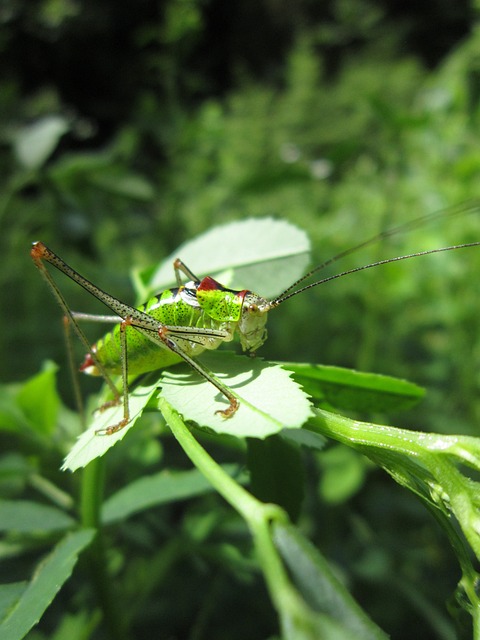Cricket infestations caused by species like house crickets, field crickets, and carpet beetles require customized cricket control plans for effective management. These plans integrate mechanical (sealing entry points), chemical (insecticides), and biological (natural predators) controls tailored to specific species' behaviors and environmental factors. Preventative measures include sanitation, regular yard maintenance, sealing entry points, and early monitoring, significantly reducing cricket habitats and deterring their access to buildings for sustained control.
Cricket infestations can disrupt homes and gardens, but effective treatments exist to eliminate these pesky insects. Understanding cricket behaviors and common types is the first step towards successful management. This article delves into tailored cricket control plans, assessing your environment for targeted solutions. We explore diverse treatment options and provide long-term preventative measures for comprehensive cricket elimination. Discover how customized cricket control plans can restore peace to your living spaces.
Understanding Cricket Infestations: Common Types and Behaviors
Cricket infestations can be a significant nuisance for homeowners and businesses alike, with various species exhibiting distinct behaviors that contribute to their proliferation. Understanding these patterns is key to implementing effective cricket control measures. Common types include house crickets, which are often drawn to warm, humid environments; field crickets, known for their powerful chirping; and carpet beetles, microscopic creatures that feed on fabrics and textiles. Each type has its own preferences, but they all share a common trait: an ability to multiply rapidly under the right conditions.
To combat these infestations, a tailored cricket control plan is essential. This involves identifying the specific species present, as different crickets require distinct treatment approaches. For instance, targeted applications of insecticides can be effective for field crickets, while carpet beetles may necessitate a more subtle approach focusing on fabric care and sanitation. Customized plans also consider environmental factors, ensuring treatments are safe for both people and pets while minimizing ecological impact.
Customized Cricket Control Plans: Assessing Your Environment
When dealing with cricket infestations, one of the most effective strategies is to implement customized cricket control plans tailored to your specific environment. The first step involves a thorough assessment of the area affected. This includes examining the type and severity of the infestation, as well as identifying potential entry points and habitats where crickets thrive. Factors such as vegetation density, climate conditions, and nearby water sources play crucial roles in understanding cricket behavior and developing targeted control measures.
Customized plans allow professionals to employ a combination of strategies including mechanical, chemical, and biological controls. Mechanical methods involve physical removal or exclusion techniques like sealing entry points and removing potential hiding places. Chemical treatments may include the application of insecticides, while biological controls introduce natural predators or parasites to regulate cricket populations. By understanding your environment and tailoring these methods accordingly, you can achieve effective cricket control that addresses the unique needs of your space.
Effective Treatment Options for Comprehensive Cricket Elimination
When dealing with cricket infestations, there’s no one-size-fits-all solution. This is where customized cricket control plans come into play, offering tailored strategies to address specific challenges. These plans often involve a combination of non-chemical and chemical treatments depending on the severity and type of infestation.
Non-chemical methods include eliminating moisture sources, sealing entry points, and using traps to monitor and reduce cricket populations. Chemical treatments, when necessary, should be applied by professionals who can safely use targeted insecticides in problem areas. Regular inspections and maintenance are crucial for monitoring success and adjusting control plans as needed.
Preventative Measures: Long-term Strategies for Cricket Management
Preventative measures play a pivotal role in long-term cricket management. Implementing customized cricket control plans tailored to specific environments and situations is key. These strategies involve a combination of physical, chemical, and biological controls. For instance, maintaining good sanitation practices, such as promptly removing debris and organic matter, can significantly reduce cricket habitats. Regular yard maintenance, including mowing and trimming vegetation, helps minimize access points for crickets to enter homes or structures.
Additionally, sealing entry points, gaps, and cracks using appropriate materials can deter crickets from entering buildings. Installing screens on windows and doors is another effective measure. Using natural repellents like citronella candles or lavender plants around the perimeter of properties can also be helpful. Moreover, monitoring and identifying cricket activity early through regular inspections enables prompt action, making it easier to manage and control infestations effectively over time.
In addressing cricket infestations, a tailored approach is key. By understanding the specific types and behaviors of these insects, implementing customized cricket control plans, and utilizing effective treatment options, homeowners and businesses can achieve comprehensive cricket elimination. Preventative measures, including long-term strategies, further reinforce these efforts, ensuring a cricket-free environment for years to come. Remember, with the right combination of knowledge and tailored solutions, cricket management becomes manageable.
